Learn How to Grow a Vitamin C Vegetable Garden in Containers and cultivate healthy veggies for the entire family!
It is always best to grow some veggies in your container garden instead of depending on the supplements that we buy from the counter to give a boost to our immune system. Follow our guide to know everything about How to Grow a Vitamin C Vegetable Garden in Containers.
Find out some Healthy Smoothie and Juice Plants for the Garden here
How to Grow a Vitamin C Vegetable Garden in Containers
If you want to give a boost to your Vitamin C intake, plant these vegetables in containers from our compiled list to make a Vitamin C Vegetable Garden in Containers.
1. Spinach

Botanical Name: Spinacia oleracea
Vitamin C Content: A 100-gram serving of spinach contains 28.1 milligrams of vitamin C.
This nutritious veggie can be grown in hot and cold weather and contains a relatively high dose of Vitamin C, B6, B9, and Folic Acid. You can choose to grow it in spring and even in early fall and use it in meat and fish dishes, salads, and soups or eat it as it is.
Learn about Growing Spinach in Pots here
2. Lettuce

Botanical Name: Lactuca sativa
Vitamin C Content: A 100-gram serving of Lettuce contains 9.2 mg of vitamin C.
Another nutritious veggie is cold-hardy Lettuce that can thrive well in warmer climates. It is rich in manganese, fiber, and has a fair dose of Vitamin C.
It can be grown throughout summer and planted even in early fall. It tastes good in sandwiches, salads, or meat and chicken dishes.
Learn about Growing Spinach in Pots here
3. Asian Greens

Botanical Name: Brassica rapa
Vitamin C Content: A 100-gram serving of Asian Greens contains 20 mg of vitamin C.
Asian Greens are also loaded with Vitamin C, E, K, A, and B. This is also a great choice to use in meat and chicken dishes or salads.
Find out the Tastiest Asian Greens for Pots here
4. Green Onions
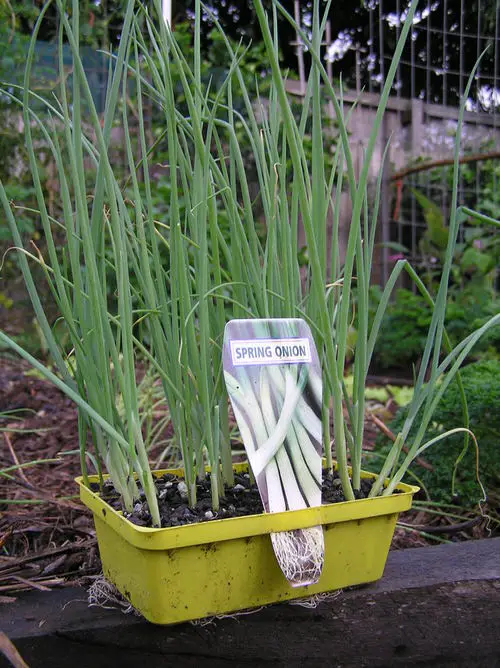
Botanical Name: Allium cepa
Vitamin C Content: A 100-gram serving of Green Onions contains 18.8 mg of vitamin C.
This is another veggie that is rich in Vitamins C, A, and K and also loaded with Riboflavin and Folic Acid. It is cold-hardy, too, and can be planted immediately after the last frost. It can be used in vegetable dishes, meat, chicken dishes, and taboule.
5. Radishes

Botanical Name: Raphanus sativus
Vitamin C Content: A 100-gram serving of Radishes contains 14.8 mg of vitamin C.
It can provide a rich source of Folate, Vitamin C, and Potassium and is one of the easiest veggies to be grown in containers. This is another cold-hardy vegetable that can be grown in late summer and early spring.
It is an excellent choice to pair with chicken, cheese, vegetable soup, or salad.
Want to Grow Watermelon Radishes in Pots? Click here
6. Onions
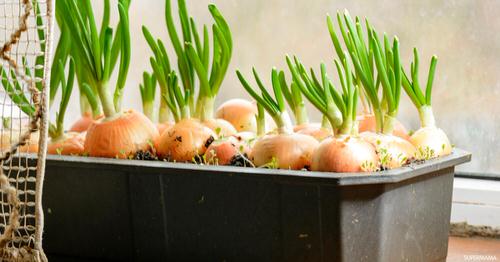
Botanical Name: Allium cepa
Vitamin C Content: A 100-gram serving of Onions contains 7.4 mg of vitamin C.
Onions are a perfect veggie for Folic Acid, Vitamin C, and Fiber and are an excellent cold-weather vegetable that can be planted during spring. It can be eaten as it is or enjoyed in almost any dish.
Check out the Best Allium Varieties here
7. Artichokes

Botanical Name: Cynara cardunculus var. scolymus
Vitamin C Content: A 100-gram serving of Artichokes contains 11.7 mg of vitamin C.
This is another great choice of vegetable to add to your collection as this perennial plant is rich in Vitamin K, C, and Folate. it can also be planted after the last frost and grows back every year. It is a vegetable that can be added to cold and warm veggies and main dishes.
8. Asparagus

Botanical Name: Asparagus Officinalis
Vitamin C Content: A 100-gram serving of Asparagus contains 5.6 mg of vitamin C.
It is one of the perennial vegetables to grow in containers that is rich in Vitamins C, E, A, and K. It can be planted after the last frost in spring. It is best enjoyed as a side dish when cooked with butter.
9. Peppers
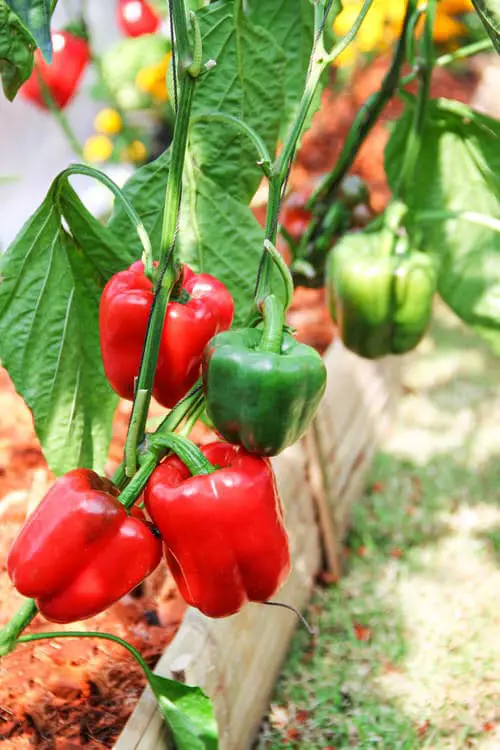
Botanical Name: Capsicum annum Group
Vitamin C Content: A 100-gram serving of Peppers contains 143.7 mg of vitamin C.
Peppers and chilies are a personal favorite of many gardeners as they are a great source of Vitamin C and iron. Peppers should be planted a month after the last spring frost.
Cold weather or frost can be fatal for your peppers. It is used best in sausages as stuffings, pasta dishes, soups, and salads.
Learn about Growing Hawaiian Chili Pepper Plant here
10. Swiss Chard
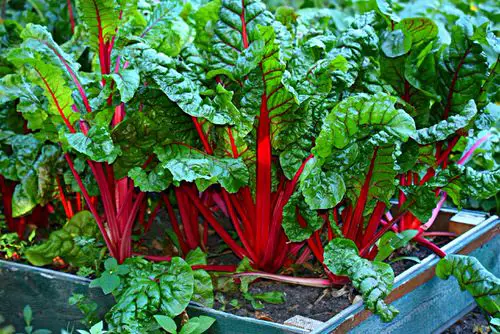
Botanical Name: Beta vulgaris subsp. vulgaris
Vitamin C Content: A 100-gram serving of Swiss Chard contains 18 mg of vitamin C.
One of the most beneficial vegetables is Swiss Chard, as it is loaded with Folic Acid, Vitamin C, Iron, and Potassium. This cold-hardy plant can be planted in early summer and spring. This vegetable tastes delicious in fish dishes and eaten raw or in salads, and soups.
11. Beets
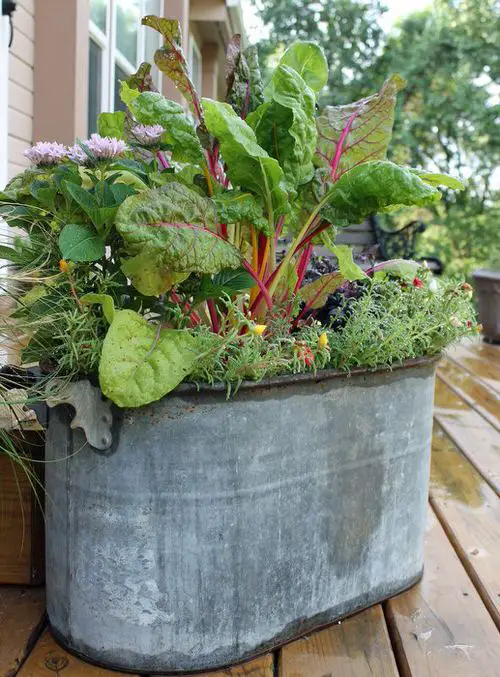
Botanical Name: Beta vulgaris subsp. vulgaris Conditiva Group
Vitamin C Content: A 100-gram serving of Beets contains 4.9 mg of vitamin C.
Beets may not taste the best, but it is rich in nutrients and is an excellent source of Folate, Potassium, Vitamin C, and Fiber. This can be planted in spring and early summer. It can be eaten raw or used to make pickles and served in many cooked veggie dishes.
Learn How to Grow Beets in Pots here
12. Tomatoes
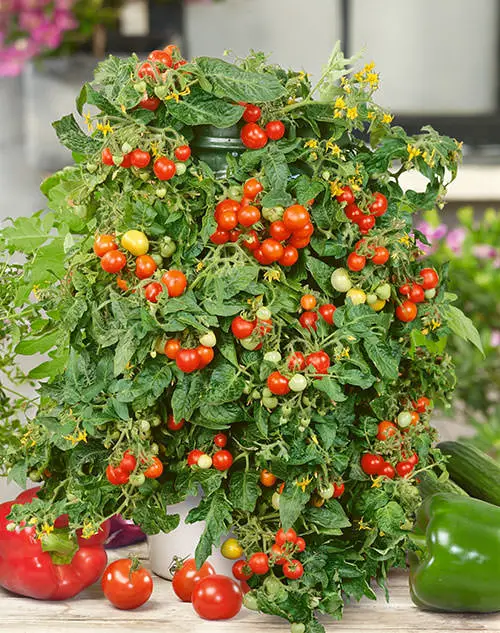
Botanical Name: Solanum Lycopersicum
Vitamin C Content: A 100-gram serving of Tomatoes contains 124 mg of vitamin C.
Tomatoes are fully rich in Vitamin C, Folate, and Potassium and easy to grow in containers. Any signs of frost or cold weather can kill your plant. It is best used to make sauces, soups, and salads, and added to side vegetable dishes.
You can choose to grow grape and cherry tomatoes in containers.
Learn the Different Ways to Propagate Tomatoes here
13. Green Sorrel
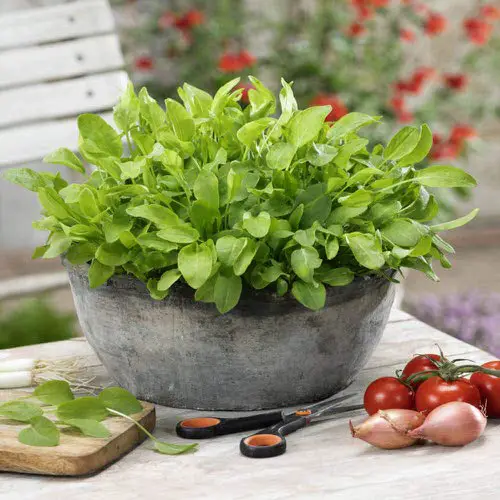
Botanical Name: Rumex acetosa
Vitamin C Content: A 100-gram serving of Green Sorrel contains 35 mg of vitamin C.
Green Sorrel tastes best when added to soups, salads, egg dishes, stews, fish dishes, and pasta. This plant is rich in Vitamins C, A, B6, Magnesium, Calcium, Iron, and Potassium.
14. Eggplants
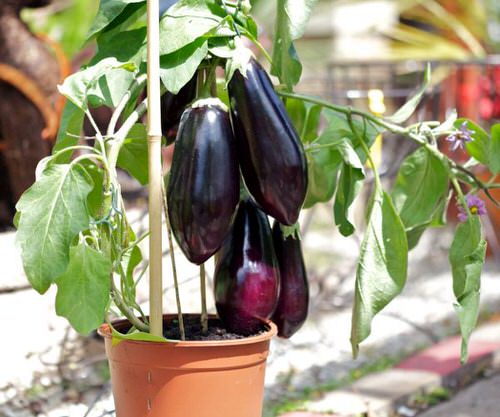
Botanical Name: Solanum melongena
Vitamin C Content: A 100-gram serving of Eggplants contains 2.5 mg of vitamin C.
Eggplants can be grown after a month from the last spring frost and is another rich source of potassium, fiber, and Vitamin C. It is best used in pasta dishes and as a side dish.
Learn some Brilliant Eggplant Pruning Tips here
15. Bloody Sorrel
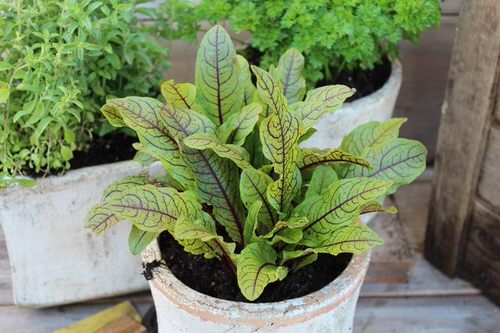
Botanical Name: Rumex sanguineus
Vitamin C Content: A 100-gram serving of Bloody Sorrel contains 35 mg of vitamin C.
This is one of the underrated varieties of vegetables, and it is considered to be as delicious and healthy as Green Sorrel, which is also loaded with Vitamin C, Magnesium, Calcium, Antioxidants, and Potassium.
It has a tangy and bright taste and is perfect for making sauces.
16. Green Chard

Botanical Name: Beta vulgaris
Vitamin C Content: A 100-gram serving of Green Chard contains 18 mg of vitamin C.
The taste of Green Chard can be compared with a subtler version of Spinach, and though the matured leaves taste a bit bitter, they are best flavored when cooked. This vegetable contains Vitamin C, E, K, A, Magnesium, Fiber, and Iron.
17. Red Chard
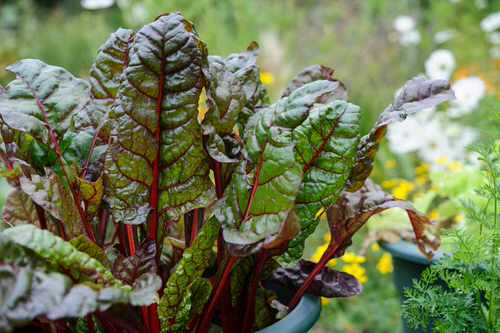
Botanical Name: Beta vulgaris
Vitamin C Content: A 100-gram serving of Red Chard contains 18 mg of vitamin C.
Red Chard is also a great source of Vitamins E, A, Potassium, Calcium, and Magnesium and contains more bioactive compounds, and is 9-10 times high in antioxidative activity as compared to Green Chard.
18. Pak Choi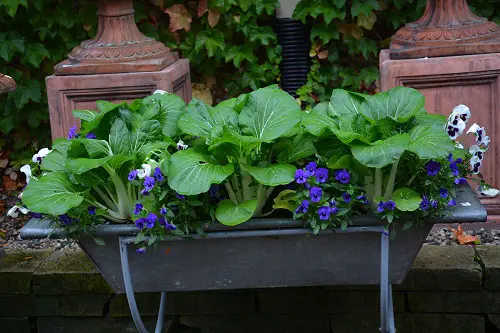
Botanical Name: Brassica rapa subsp. chinensis
Vitamin C Content: A 100-gram serving of Pak Choi contains 45 mg of vitamin C.
Pak Choi is an excellent source of Vitamins C, K, A, and Folate. The selenium content in Pak Choi is beneficial in boosting the health of thyroid glands, while Potassium, Magnesium, and Calcium improve bone strength and help lowering blood pressure.
Want to Grow Pak Choi in Pots? Click here
19. Shungiku
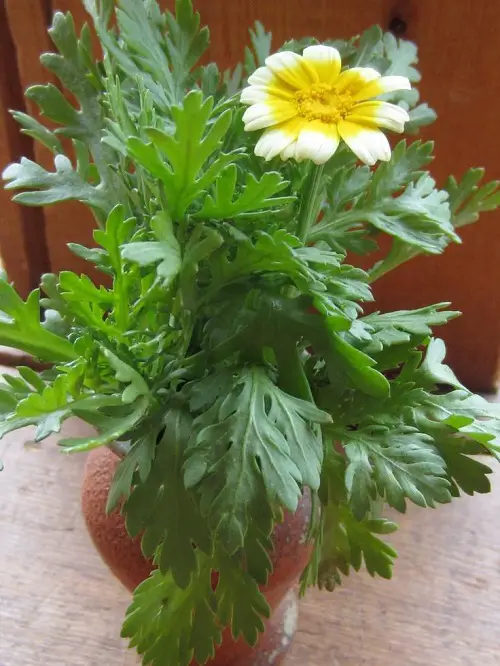
Botanical Name: Glebionis coronaria
Vitamin C Content: A 100-gram serving of Shungiku contains 24 mg of vitamin C.
Popular as Spring Chrysanthemum in Japanese cuisine, Shungiku is loaded with Vitamins C, A, E, K, B12, B6, Flavonoids, and Carotenoids. You can stir-fry its flowers, leaves, and stems.
It relieves headache, cold, fever; helps with microbial infections and constipation; and prevents the formation of kidney stones.
20. Broccolli

Botanical Name: Brassica oleracea var. italica
Vitamin C Content: A 100-gram serving of Shungiku contains 89 mg of vitamin C.
Broccoli counts as a superfood with high Vitamin C, Magnesium, Iron, Sodium, and fiber content. It checks blood sugar levels, boosts immunity promotes heart health. Avail its benefits by incorporating this veggie in salads, soups, and curries.
Learn about Growing Romanesco Broccoli here
21. Brassicas
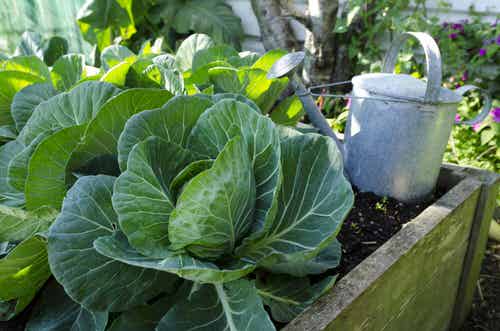
Botanical Name: Brassica
Vitamin C Content: A 100-gram serving of Shungiku contains 53 mg of vitamin C.
Brassicas are loaded with Vitamins C, K, A, E, Folate, Iron, Calcium, Potassium, and Phosphorus, which boost immunity and prevent cancer. Cook or steam the Brassica veggies to remove the goitrogenic effect of myrosinase, keeping their nutrition intact.


